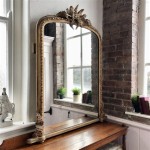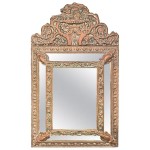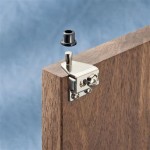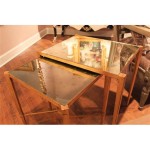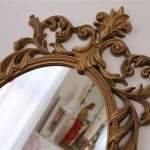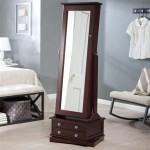Antique Hand Carved Wooden Mirrors
Antique hand-carved wooden mirrors offer a unique blend of functionality and artistry. These mirrors, crafted with meticulous detail in previous eras, serve as both reflective surfaces and decorative pieces, adding a touch of history and elegance to any space. Their enduring appeal lies in the craftsmanship involved, the stories they whisper of bygone days, and the inherent beauty of natural wood transformed into intricate designs.
The Art of Hand Carving
The process of hand carving wood demands skill, patience, and an artistic eye. Unlike mass-produced mirrors, antique hand-carved pieces showcase the individual touch of the artisan. Each curve, flourish, and detail is painstakingly shaped using specialized tools, resulting in a unique work of art. The carvings can range from simple geometric patterns to elaborate depictions of flora, fauna, or mythological figures, reflecting the stylistic trends and cultural influences of the period in which they were created.
Identifying Antique Hand-Carved Mirrors
Authenticating an antique hand-carved mirror requires careful observation and research. Examining the wood itself can offer clues about its age and origin. Different wood types, such as walnut, mahogany, oak, or pine, were favored in different eras and regions. Looking for signs of age, such as patina, wear, and imperfections in the wood, can help distinguish genuine antiques from newer reproductions. The style of carving can also be indicative of a specific period or geographical location. Consulting with antique experts or appraisers can provide further insights into a mirror's provenance and value.
Wood Types and Their Influence on Design
The type of wood used significantly impacts the overall design and aesthetic of an antique hand-carved mirror. Hardwoods like mahogany and walnut were often chosen for their rich color, durability, and ability to hold intricate detail. Oak, with its prominent grain, lent itself to bolder, more rustic designs. Softer woods like pine were more accessible and commonly used for simpler, folk-style carvings. The natural characteristics of the wood, including its grain pattern and color variations, become integral parts of the overall design, adding depth and texture to the carved elements.
Styles and Motifs Across Different Eras
Antique hand-carved mirrors reflect the stylistic trends prevalent throughout history. Victorian-era mirrors often feature ornate carvings, incorporating motifs such as flowers, leaves, scrolls, and cherubs. Art Deco mirrors showcase geometric patterns and streamlined designs, reflecting the modernist aesthetic of the early 20th century. Renaissance and Baroque mirrors are characterized by elaborate ornamentation, often featuring mythological figures and intricate scrollwork. Identifying the specific style and motifs can help determine the age and origin of the mirror.
Caring for Antique Hand-Carved Mirrors
Preserving the beauty and integrity of an antique hand-carved mirror requires careful attention to its unique needs. Regular dusting with a soft cloth is essential to prevent the accumulation of dirt and grime. Avoid using harsh chemicals or abrasive cleaners, as these can damage the delicate wood and finish. Extreme temperature fluctuations and high humidity should be avoided as these can cause warping or cracking. Consulting with a professional conservator can provide guidance on specialized cleaning and restoration techniques.
Displaying and Incorporating Antique Mirrors into Modern Interiors
Antique hand-carved mirrors can enhance a variety of interior design styles. Their versatility allows them to seamlessly integrate into traditional, eclectic, or even contemporary settings. A large, ornate mirror can serve as a focal point in a living room or dining room, while a smaller, simpler mirror can add a touch of character to a hallway or bedroom. The placement of the mirror should be considered carefully to maximize its reflective qualities and enhance the overall aesthetic of the space. Layering antique mirrors with other decorative elements, such as artwork or textiles, can create a visually rich and layered effect.
The Value and Investment Potential of Antique Mirrors
Antique hand-carved mirrors represent not only decorative objects but also potential investments. Their value is determined by factors such as age, rarity, condition, craftsmanship, and historical significance. Mirrors with documented provenance or those attributed to renowned artisans can command significant prices in the antique market. As tangible pieces of history, antique mirrors offer a unique blend of aesthetic appeal and investment potential, making them a desirable addition to any collection.

Hand Carved Wooden Mirror Mid Century Modern For Wall Décor Ornate Mount Large Mirrors Decorative

Hand Carved Wooden Mirror Mid Century Modern For Wall Décor Ornate Mount Large Mirrors Decorative

French 1920 S Mirror With Hand Carved Wooden Frame Dm0311 06 145 Antiques

Antique Italian Baroque Gilded Hand Carved Wood Mirror

The Deoli N Vintage Inspired Mirror Hand Carved Wooden Finland
Hand Carved Wooden Framed Mirror Renaissance

Large Antique Style Carved Ornate Vintage Gilt Wood Mirror Frame 4ft X 5ft Yola Gray Antiques Interiors

Wood Mirror Frame Hand Carving Floral Antique Style Wall Art Hanging Home Decor

Art Nouveau Style Rectangular Gold Foil Hand Carved Wooden Mirror 1970s For At Pamono

Customized Hand Carved Wooden Mirror Frame Moroccan Vintage Style Old Wall Mount Wood Farmhouse Decor Norway

